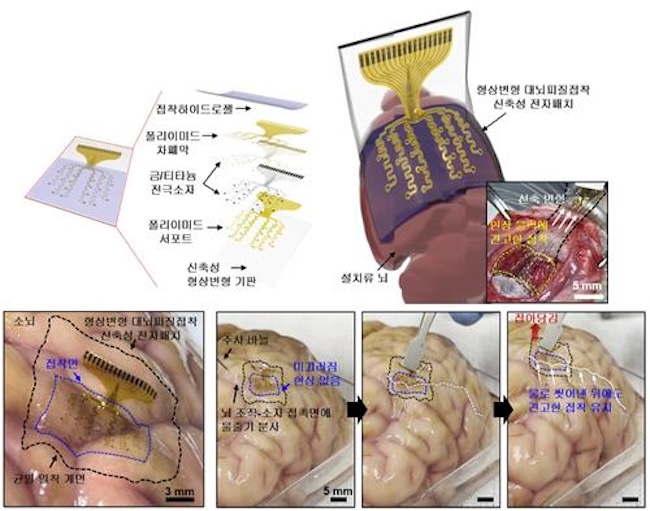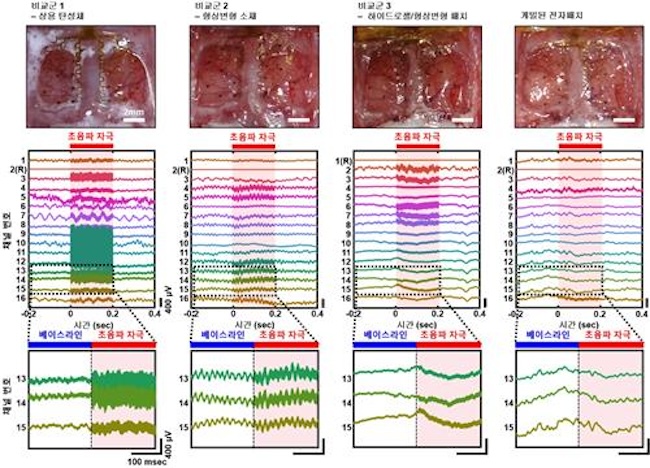
The electronic patch, firmly attached to the brain surface, remains stable even under negative pressure vibrations, allowing high-quality measurement of cerebral cortex conduction without noise. (Image courtesy of IBS)
SEOUL, Sept. 20 (Korea Bizwire) – In a breakthrough that could revolutionize the treatment of neurological disorders, South Korean researchers have developed technology that tailors electronic stimulation to individual brain patterns, potentially offering new hope for patients with drug-resistant conditions.
The Institute for Basic Science (IBS) announced on September 19 that a team led by researchers Son Dong-hee and Shin Mikyung from the Center for Neuroscience Imaging Research, in collaboration with Kim Hyungmin from the Korea Institute of Science and Technology (KIST), has successfully implemented an “electronic medicine” technique.
This innovative approach measures unique brain waves in each patient to treat brain disorders through electromagnetic stimulation.
While treatments like transcranial focused ultrasound have been attempted for intractable brain disorders that don’t respond to medication, these methods often yield inconsistent results due to variations in patients’ neural structures. In some cases, they may even exacerbate symptoms.
The new method addresses these challenges by measuring electrical brain waves in response to ultrasound stimulation, allowing for personalized stimulation conditions for each patient.
This approach requires real-time monitoring of electrical signals from the cerebral cortex surface, known as electrocorticography.
Previously, electrode devices used for electrocorticography were too rigid and unadaptable to conform to the brain’s complex curvature. They also couldn’t maintain stable contact during slight brain movements, making long-term wave measurement difficult.

In tests on rats with induced epilepsy, the technology demonstrated stable brain wave monitoring. (Image courtesy of IBS)
To overcome these obstacles, the research team developed a stretchable electronic patch based on hydrogel and shape-deformable substrates. This patch can uniformly adhere to the cerebral cortex’s curved surface and firmly attach to the tissue surface.
“The hydrogel absorbs body fluids at the contact surface, swelling within seconds to attach to the surface,” explained Son.
“Thanks to the easily deformable shape-changing material, it can adhere without even the slightest gap.”
The electronic patch, firmly attached to the brain surface, remains stable even under negative pressure vibrations, allowing high-quality measurement of cerebral cortex conduction without noise.
In tests on rats with induced epilepsy, the technology demonstrated stable brain wave monitoring. It successfully detected high-frequency pathological signals that precede seizures, predicting seizure symptoms and activating ultrasound stimulation.
When the stimulation effect was insufficient, the system immediately adjusted conditions to suppress seizure symptoms.
“For the first time, we’ve been able to measure in real-time the neural activity of individual patients responding to ultrasound stimulation,” Son stated.
“This will contribute to the development of personalized electronic medicine for brain disorders.”
The research findings were published online in the international journal Nature Electronics on September 11.
Kevin Lee (kevinlee@koreabizwire.com)






